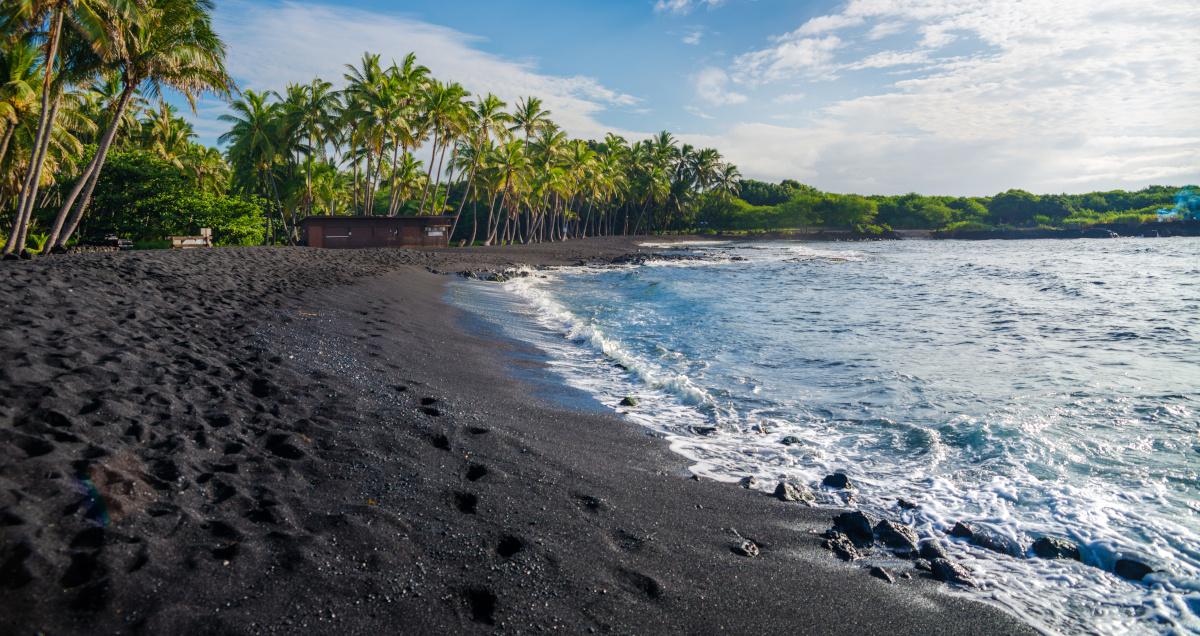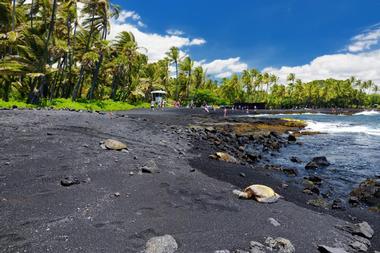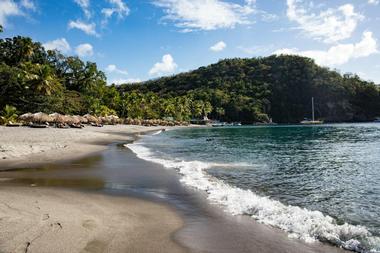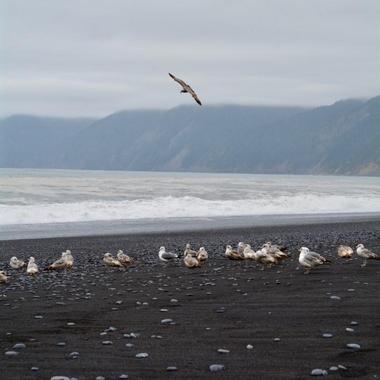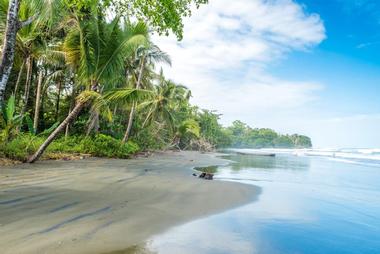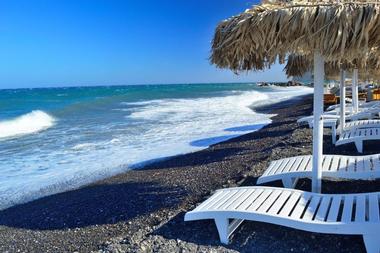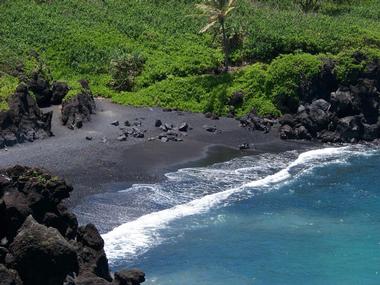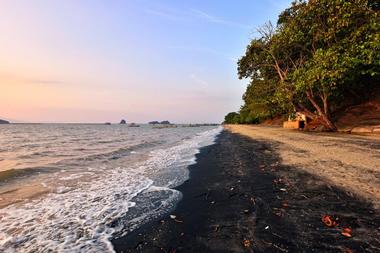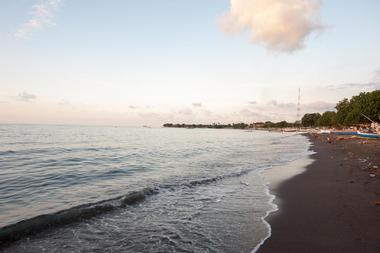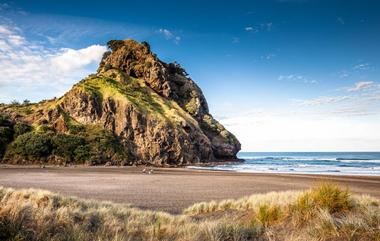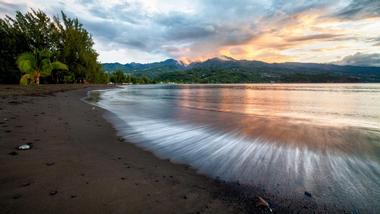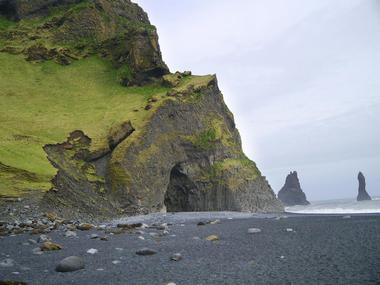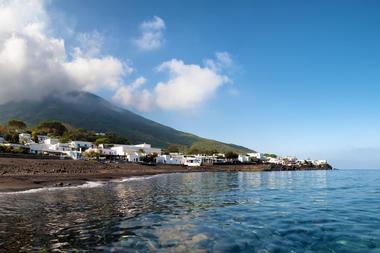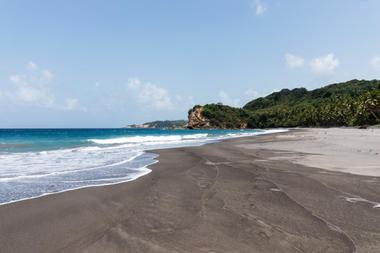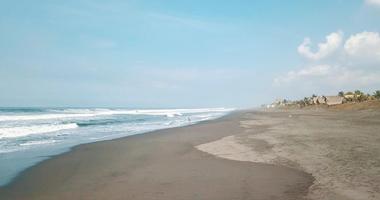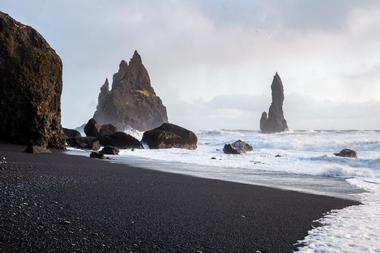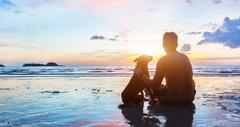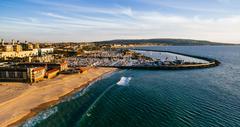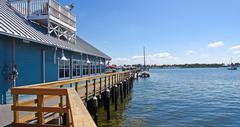While they are rare, black sand beaches exist all over the world wherever there are volcanoes and where, after a millennia, the waves, rain and winds have eroded lava rocks into a fine sand. Most black sand beaches are in tropical places like Hawaii and the Philippines or in the Mediterranean such as Italy and Greece, but there are some beaches covered in black sand where you cannot simply jump into a warm surf, in places such as Alaska and Iceland.
Punaluu Beach, Hawaii
In Hawaii the beaches can have white, green or black sand, thanks to the constant and recent volcanic activity on the islands.
If you would like to discover how it feels to walk on black sand, head to Punaluu Beach on the southeastern Kau coast of Hawaii Island. Snuggled between Hawaii Volcanoes National Park and the town of Naalehu, this beach is fringed by stately coconut palms and the hot sand attracts giant Hawaiian green sea turtles.
Both the turtles and the black sand are protected, so do not disturb the turtles and do not take any sand. Swimming on the beach is not perfect but possible while the wide space and the shade of palm trees make it ideal for picnics.
While there are other black sand beaches in Hawaii, Punaluu Beach is considered one of the most beautiful.
Ninole Loop Rd, Naalehu, Big Island, HI 96772 , Punaluu Beach Video
The drive from Kona took us about 2.5 hours. The road is very scenic with beautiful ocean views:
Anse Chastanet, St. Lucia
If you want to swim in the warm, calm waters of Saint Lucia, go to the beach on its protected, Caribbean side.
If you want to work on your tan and watch the powerful Atlantic waves wash the shore, find a beach on the eastern side of the island.
All the beaches are magnificent, and most of them have black sand, a consequence of island’s volcanic origin.
One of the most beautiful black sand beaches is in front of the Anse Chastanet Resort, which is lined with stately palm trees and overshadowed by towering mountain slopes.
The beach is beautifully maintained by the resort but anyone can access it. There is some great snorkeling just off the beach as the waters are part of a marine reserve.
The drive from the airport is just over one hour:
Black Sands Beach, California
Part of the King Range National Conservation Area, Black Sands Beach is a 3.4-mile long, fairly wide black sand and dark pebble beach at the end of the 20-mile long coastline between Shelter Cove and Mattole River Campground.
Its hard-packed sand is wonderful for long walks and beach combing. From the beach you can take the Lost Coast Trail north to many wilderness camps and remote hiking spots.
When backpacking across the beach, plan carefully as parts of the beach get inundated by the high tide. There is an offshore reef that protects the beach.
Swimming is possible as long as you take care. At low tide, you can walk all the way to Little Black Sand Beach.
Beach Rd and Humboldt Loop, Whitethorn, CA 95589
The drive takes around 4.5 hours from San Francisco:
Cahuita Beach, Costa Rica
Cahuita is a small yet lively village on Costa Rica’s Caribbean coast, about 27 miles from Puerto Limón. As the highway from San Jose to Limon has recently been completed, the area is only just being discovered by tourists, so you can often find beautiful Negra Beach, or Playa Negra, fairly empty.
The fine black sand Cahuita Beach is of volcanic origin and looks curious but is no problem to walk on.
The beach offers great swimming, snorkeling and diving opportunities, especially on the coral reef which stretches between Black Beach and White Beach and is part of Cahuita National Park. The abundance of marine life is astonishing.
Cahuita National Park, Limon, Costa Rica
The drive from San Jose takes about 3 hours:
Kamari Beach, Greece
Located on the southeast end of the beautiful Greek island of Santorini, Kamari is an upscale beach resort overshadowed by the steep slopes of Mesa Vouno, with a magnificent black sand beach and the ancient city of Thira that dates back to the 9th century.
The Kamari Beach is well-organized and lined with lounge chairs and umbrellas and it can get fairly crowded.
A pleasant promenade runs alongside the beach with outdoor bars, cafes and restaurants on its other side.
There are many places that rent out water sports equipment. The beach is protected by a crescent-shaped bay and the water is calm and almost cobalt blue. It is great for swimming, snorkeling and diving.
Kamari, Santorini, Greece
The beach is just 10 minutes from the airport:
Black Sand Beach, Maui
Wai‘anapanapa State Park is a 120-acre tropical paradise on the Hawaiian island of Maui with a unique and spectacular black sand beach, sea stacks, stone arches, lava caves and blowholes.
The fine black sand was created by thousands of years of powerful surf pounding the volcanic basalt rocks that surround the beach.
The beach is located just outside the town of Hana and is popular for sunbathing, swimming, and long walks across the wide expanse of dark sand.
The rough rock formations around the beach provide shelter for many birds and sea turtles.
There are a number of local legends linked to the Wai‘anapanapa, meaning ‘glistening waters’, which Hawaiians consider sacred.
Wai‘anapanapa, Hana, Maui, Hawaii
Langkawi Island, Malaysia
Located on Malaysia’s west coast is Langkawi, a breathtakingly beautiful archipelago of 99 islands surrounded by blue sea and covered with lush tropical jungle mixed with rice paddies. The main island is famous for its fantastic diving sites at the Underwater World Langkawi at Pantai Cenang, the cool cable car in Pantai Kok and the beautiful Black Sand Beach nearby.
Only about a 20-minute drive from the cable car, the beach is a lovely, serene retreat from the better-known and often crowded island beaches. The beach is particularly popular among locals, who like to gather on the beach at the weekend. The black sand is mixed with white sand and legend has it that it is black because a mermaid cursed it when a fisherman stole her ring.
Lovina Beach, Bali
If you are tired of crowds on the beaches of southern Bali, head north to the beautiful Lovina Beach, just west of Singaraja.
This tranquil 12 km-long stretch of fascinating volcanic black sand is much loved by locals and is swiftly being discovered by tourists, especially Australians during the Christmas holidays.
The beach is wide and flat, great for taking a sunset stroll, and is lined with ancient trees, shops, restaurants and dive shops. The largest village on the beach is Kalibukbuk and there are also a few luxury resorts as well.
You can visit the healthy offshore reef straight from the beach at Kalibukbuk by snorkeling or diving, or you can simply lie on the beach and enjoy a soothing massage while drinking a fruity cocktail.
Perissa Beach, Greece
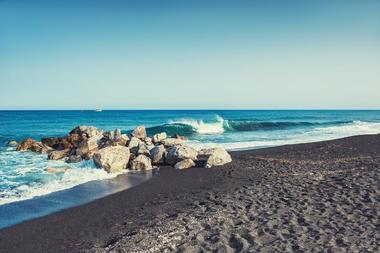
About 15 km from the village of Fira on the southeastern end of Santorini, Greece is the 7 km-long Perissa Beach, one of the most beautiful on this side of Santorini. Like most Santorini beaches, it is covered by black volcanic sand created by millennia of wave action against the dark volcanic rocks that shadow the beach.
The sand gets very hot during the day, but it keeps the waters of the Aegean Sea crystal clear – great for swimming and snorkeling.
The beach is dominated by the looming, almost vertical slopes of Mesa Vouno.
The mountain is great for exploring since it is home to the ruins of the ancient town of Thira.
There is a narrow path you can hike or ride along on a donkey. Perissa is also known as a party beach that is popular with backpackers.
Piha Beach, New Zealand
Located on the west coast of New Zealand’s North Island about 40 km from Auckland, Piha is New Zealand’s most popular and best-known beach.
Piha Beach is famous for its fascinating black iron sand and fantastic surfing – New Zealand’s first surf boat race was at Piha in the 1930s.
The sea is often moody and mysterious and the dark beach looks wild and wind-swept.
Piha is known for dangerous rips and currents and swimming is recommended only in areas regularly patrolled by surf clubs.
If surfing is not your thing, then Piha is wonderful for hiking and exploring nature – it is backed by the scenic Waitakere Ranges, covered with lush sub-tropical forest and within a protected park.
There are many trails leading up the mountainside from the beach.
Piha, Auckland Region, New Zealand
Point Venus, Tahiti
Point Venus is low, sandy peninsula at Tahiti's northernmost end and is densely covered with beautiful casuarina trees. Little over a mile from the main road is a beautiful black sand beach surrounded by a charming park full of local plants.
There is also a 1868 tall white lighthouse, a snack bar, bathrooms, and a souvenir and handicrafts shop. The beach is very popular with picnickers and has a long history.
TIt received its name from Captain James Cook, who in 1769 observed the transit of Venus across the sun from the spot between the beach and the river which transects the peninsula in half.
Santo Domingo Beach, Philippines
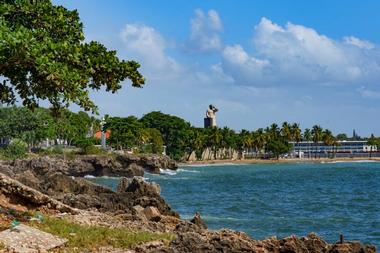
Traveling through the Philippines means enjoying many lovely beaches with fine golden or white sand. However, in the town of Santo Domingo in the province of Albay on the island of Luzon is a rare beach with jet black sand, unique for the Philippines. The stunning contrast between the truly black beach, the azure water, and the white clouds in the clear blue sky is breathtaking.
The Santo Domingo Beach is wide, fringed with tall palm trees, and overshadowed by Mount Mayon, the photographer’s dream. The best time to experience this magical spot is on a clear full moon night, when you can watch the moon rise over the water against the twinkling lights of towns of Bacacay, Legazpi and Tiwi across the Albay Bay.
Albay, Santo Domingo, Luzon 4500, Philippines
Vik Beach, Iceland
If you travel to Iceland’s southernmost tip, you will find a village of Vik, a small community of only a few hundred people. The village beach faces the open Atlantic Ocean, is often pounded by powerful waves and is surrounded by dramatic Reynisdrangar rocks. Vik Beach is famous as one of the most beautiful non-tropical black sand beaches in the world. The fine black sand is of volcanic origin – no surprise on Iceland, an island that is full of active volcanoes.
The village is overshadowed by the mountains of Hjörleifshöfði, Pétursey, and Hafursey, and the Myrdalsjokull glacier is just above the village. The glacier sits on the volcano Katla, the source of the black sand, which last erupted in 1918. The next big eruption is brewing, according to scientists, and when it comes it will melt the glacier and wash away the village, leaving behind only the village church at the top of the hill.
Vikurbraut, Vik 870, Iceland
Black Sand Beach, Alaska
One of the most popular and most spectacular beaches in Alaska is Black Sand Beach in Prince William Sound. About ¼ of a mile long and quite wide, it is a favorite place for kayakers during the summer when they come to camp and explore the surrounding majestic tidewater glaciers.
As you stroll along the coarse black sand, you can enjoy a magnificent view of Barry Arm, with water cascading off the glaciers overhanging the beach and majestic mountains in the background.
It is not uncommon to see glaciers beached on the black sand. At low tide, more of the coastline becomes exposed and it is possible to explore from the beach to the surrounding cliffs.
A short paddle away from the beach you can find huge rocks exposed by the glacier, which has retreated by more than ¼ of a mile.
Barry Arm, Prince William Sound, Alaska
Spiaggia di Ficogrande, Stromboli, Sicily
The fine black sands of Spiaggia di Ficogrande were created by volcanic activity thousands of years ago. This particular black sand beach comprises a wide stretch of sand which separates the traditional while houses from the azure waters of the Mediterranean. The beach is mostly free to visit and you can hire umbrellas and loungers on site. This is a well-maintained beach providing access to crystal clear waters and it has been awarded Blue Flag status. There are on-site restrooms and a restaurant and you can bring long your 4-legged friend to enjoy the beach. The presence of a number of small fishing boats generally adds to the ambiance.
Spiaggia di Ficogrande, Stromboli Island, Sicily
Karekare Beach, New Zealand
Remote and secluded, Karekare Beach is located on the west coast of New Zealand’s south island, about 35km from Auckland. This is a picturesque beach which can be accessed via a selection of 10min trails from the car park. Perfect for nature lovers and photographers, the black sands of the beach and the pounding surf produce an excellent backdrop for atmospheric photos. Nearby, you can also admire the very attractive Karekare Falls, which take just 15 minutes to reach on foot from the beach. The beach and the waterfalls are great for views and picnics and kids will enjoy playing in the black sand.
Number One Beach, Dominica
Also known as Hampstead Beach, Number One Beach lies on a remote stretch of Dominica’s Atlantic shoreline. The beach was the setting for one of the most dramatic scenes from the Pirates of the Caribbean, when Jack Sparrow was chased along this stretch of sand by a band of enraged locals. While it is true that Number One Beach is exotic and tropically beautiful, it is a little too remote to be popular and visitors wanting to come here will need to drive 90 minutes from the capital, Roseau. You can certainly enjoy a Robinson Crusoe-like walk around the beach but the waters are generally too chilly and rough for swimming.
Playa Negro, Puerto Rico
The interesting black sands of Playa Negro are brought from volcanic areas of Puerto Rico like Monte Pirata by rivers and streams and deposited on the edge of the ocean during heavy rains. Here they form patches of black sand on the otherwise golden shores of the island. The movement of the waves and the tides form a dramatic tapestry of colors for visitors to explore as they make their way along the beach. To further enhance the beauty of this stretch of ocean shore, the beach is backed by towering golden cliffs and dunes and the sands are often covered in interesting pieces of driftwood.
Benijo Beach, Canary Islands
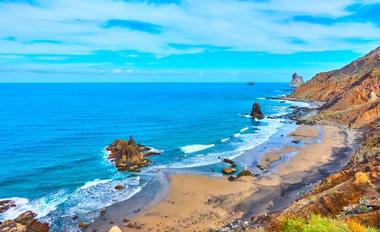
Located on a remote north-eastern part of the island of Tenerife, Benijo Beach is known to be a quiet and serene hang-out for the island’s naturists. The beach forms part of the Anaga Rural Park and can be found at the end of a very scenic road which meanders through forests, ravines and peaks. The beach should definitely feature on your to-do list for the island, offering amazing views of the pounding ocean and interesting rock formations. It is not always possible to swim at Benijo Beach due to the heavy seas on this side of the island; however, visitors often comment that Benijo is worth seeking out for the beauty of the area.
Monterrico Beach, Guatemala
The coal-black volcanic sands of Monterrico Beach have a slightly wild-and-wonderful appeal which sets them apart from your normal tropical white-sand beaches. The beach is located on the Pacific coast of Guatemala and is known for its laid-back and untamed surfer-style atmosphere. Although the beach is becoming more and more popular you will not usually have to compete with crowds for your place in the sun. Close to the beach there are a variety of nature-related activities including visiting the Mangrove swamps on a guided small-boat tour to view a variety of unusual species of birds and wildlife which make their home in this little slice of black-sand paradise.
Miho No Matsubara Beach, Japan
Surrounded by the ocean on all sides, Japan has a great many beaches for visitors to explore. Miho No Matsubara Beach is located on the Miho Peninsula, about 45km from towering Mt. Fuji. This black-sand beach is about 5km long and is backed by a long grove of pine trees, which are considered to be sacred to the Shinto spirits. For this reason, the beach is a popular place for locals to gather to celebrate special occasions like weddings and births. You will notice that the beach has a long and thin shape which has been carved by the movements of waves and sand over many hundreds of years.
Miho No Matsubara Beach, Shizuoka City, Japan
Ureki Beach, Georgia
You will find Ureki Beach nestled along the coastline of the Black Sea. It is one of the few sandy beaches in the area and is covered in fine grey to black volcanic sand which is rich in Magnetite, which is known to have unique healing properties for humans. Possibly for this reason, Ureki beach is very popular and it can be difficult to find a peaceful spot to enjoy the sea and the son at peak holiday season. There are a few showers and toilets at the entrance to the beach but you will need to bring your own umbrellas and loungers. Fortunately, facilities such as a playground, café and restaurant are located close by.
Reynisfjara Beach, Iceland
Located on the south coast of Iceland, near the southern-most village on the mainland, Reynisfjara Beach is one of the best-known black beaches in the world. People come to this beach from all corners of the globe to admire remarkable vistas, enormous basalt stone stacks and, of course, the fine black volcanic sands. Most visitors who are taking a road tour of Iceland will be brought here but if you are touring on your own you can easily drive here from Reykjavík in a few hours. The beach is so impressive that National Geographic magazine has described it as the “Most beautiful non-tropical beach in the world”.
Kehena Black Sand Beach, Hawaii
Quite startling in its blackness, Kehena Black Sand Beach in Hawaii is unlike any other tropical beach you are likely to have visited. Located in the Puna district on Big Island, this long, narrow crescent-shaped beach if one of very few “clothing optional” beaches on Hawaii and is popular with local and visiting naturists. The beach is sometimes also referred to as Dolphin Beach because it is regularly frequented by spinner dolphins. The black sand beach was formed fairly recently when lava flowed down into the ocean from the island’s active volcano in 1955 – the point of the lava flow can still be seen at the eastern end of the beach.


